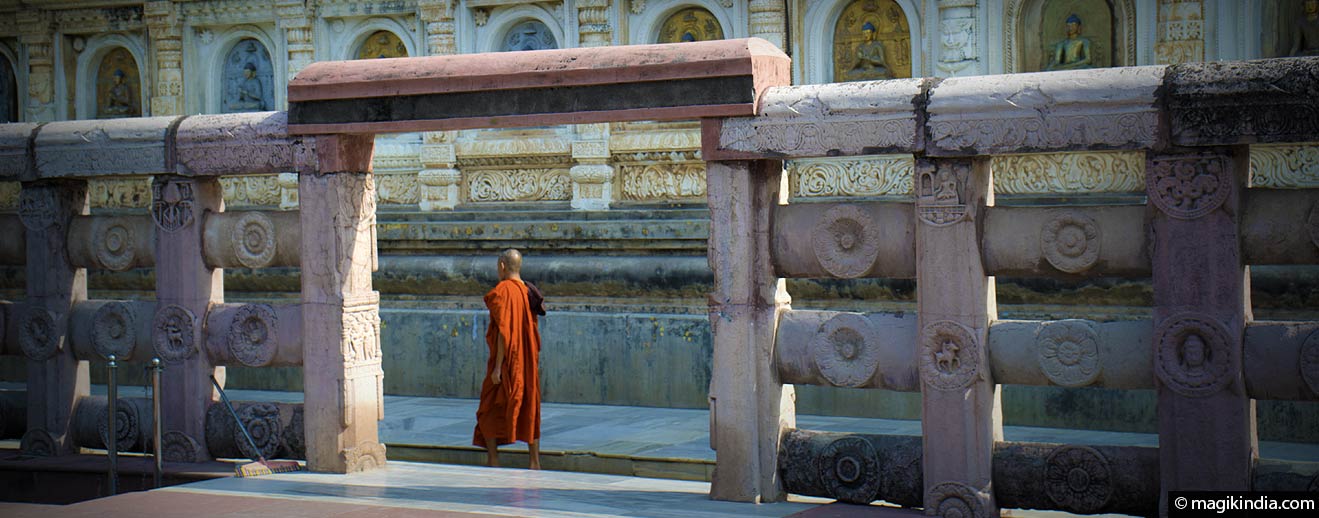
In the footsteps of Lord Buddha in India
Buddhism has more than 300 million followers around the world, which makes it the 4th religion (or philosophy) after Christianity, Islam and Hinduism. The history of Buddhism begins around the 5th century BC, when Siddharta Gautama, prince of the Shakya kingdom, got enlightened under a ficus tree. Siddharta Gautama then became the ‘Buddha Samyaksam’ or ‘the perfectly awakened one.’ From then until his nirvana, Buddha visited several cities in North India spreading his message of the Middle Way. I invite you to follow in the footsteps of Buddha over more than 1000 km in northern India and Nepal, from the birth of the Prince Siddharta Gautama to the Nirvana of Buddha.
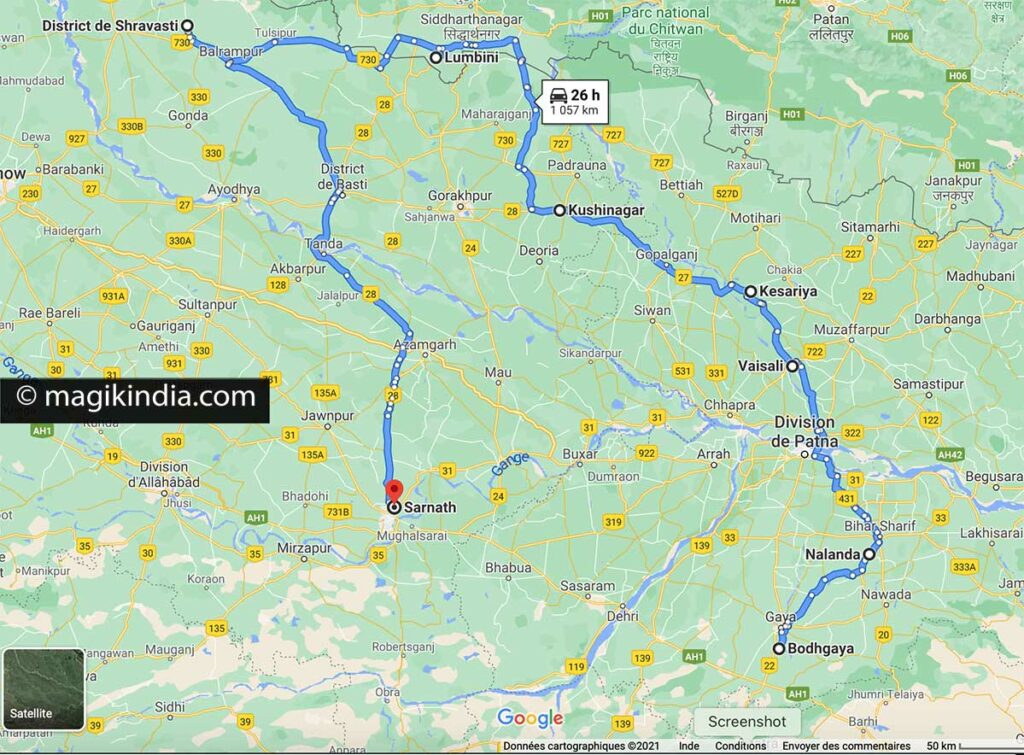
There are several possible routes for this Buddhist circuit; Some travelers begin this journey from Varanasi, some others from Bodhgaya or Lucknow, or start it from the beautiful site of Sanchi in the state of Madhya Pradesh.
The itinerary described below is the one I followed, from the place of the enlightenment of Buddha until his first sermon at Sarnath. For geographical reasons, this circuit doesn’t follow the life of Buddha in chronological order.
Ready for the trip?
What is a stupa?
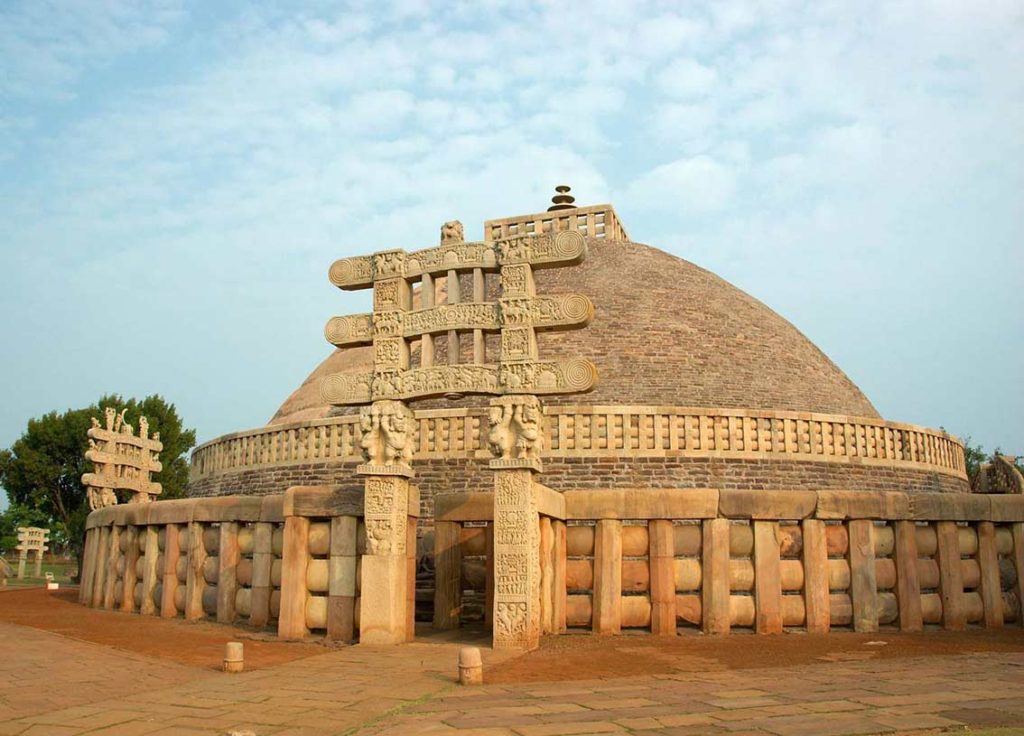
Before starting the adventure, a few words about the stupa, a term designating a Buddhist hemispherical edifice, often surrounded by a wall, containing the relics of Buddhist saints. The stupa is used as a place of meditation and for protection and it is considered as emanating the living energy of the holy person.
The first stupas date from the 2nd century before our era, and they were constructed of wood or earth. Stone will then be used to built them.
The architecture of the stupa was transformed as Buddhism extended to other Asian countries: the stupa can have the form of a pagoda, a bell, or even a pyramid.
Bodhgaya, the enlightenment of Bouddha
Beginning of the journey / 2-day visit
I start my journey at Boghgaya, in the state of Bihar, where Buddhism originated about 2,500 years ago.

At the age of 29, Siddharta Gautama, Prince of Kapilavastu, abandoned his material and worldly life to find the truth of existence. He went as a wandering hermit and one day, as he was walking, he sat down under a peepal tree (the Bodhi tree) and resolved not to get up from this place until he had found the enlightemnent. He remained in meditation for 49 days without moving, leading several battles against the demon Mara (the illusion). Then, on the night of the full moon of Wesak (May-June), at the age of 35, he became the ‘Buddha’, ‘the one who knows’…
READ THE FULL ARTICLE ABOUT BODHGAYA +
Vaishali, the last sermon of Buddha
170 km / 1-day visit
I continue my journey towards the town of Vaishali, 170 km to the north of Bodhgaya.
On the road, after a hundred kilometers, be sure to stop at Nalanda, a UNESCO world heritage site. Nalanda was one of the first universities in the world and remained active during 800 years, from the 5th to the 12th century AD. There were up to 2,000 teachers and 10,000 students. The high level of teaching at Nalanda attracted many scholars from all over Asia.
At the end of the 12th century, Nalanda was destroyed by the Mughal invaders. The site is now in ruins but it still has beautiful vestiges of several monasteries, temples and stupas.
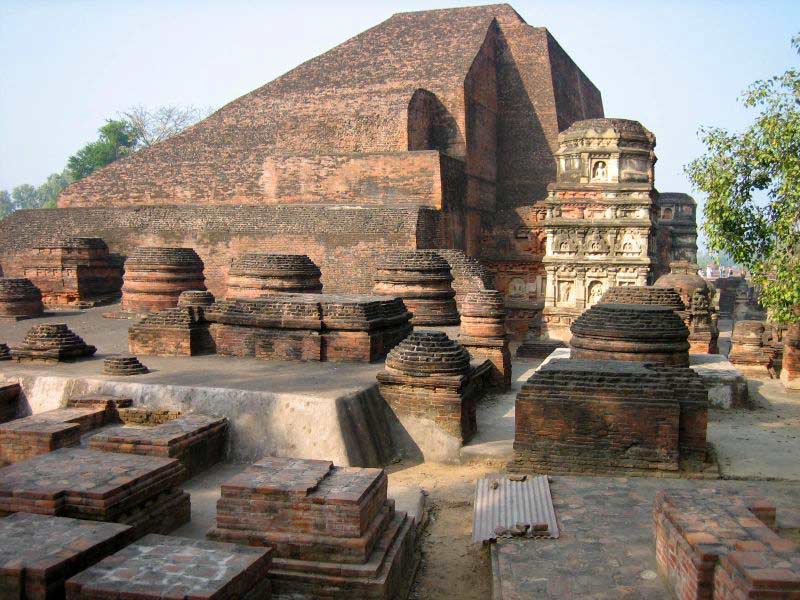
Arriving at Vaishali … Vaishali takes its name from the King Vishal and was, in the 6th century BC, the capital of the ‘Vrijji Mahajanapada’ confederation, one of the sixteen kingdoms of ancient India; historians think that this confederation was perhaps the first republic in the world, similar to what will be found later in ancient Greece.
It is said that Buddha visited Vaishali several times and that a few kilometers from there, in Kolhua, he pronounced his last sermon and announced his Mahaparinirvana (his death).
To commemorate this event, the Buddhist emperor Ashoka built a pillar, one of the numerous pillars known as ‘Ashokan pillars’.
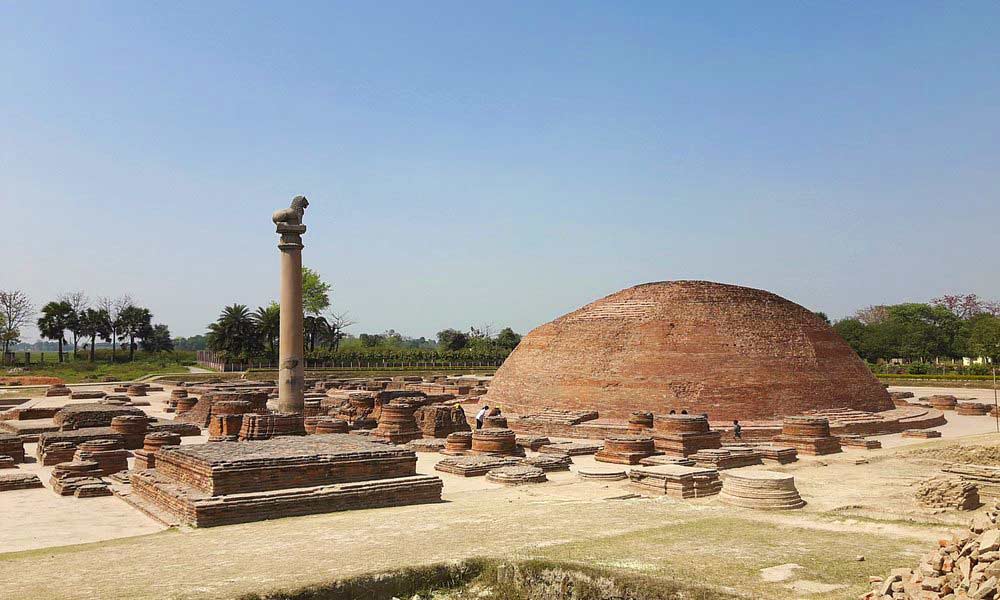
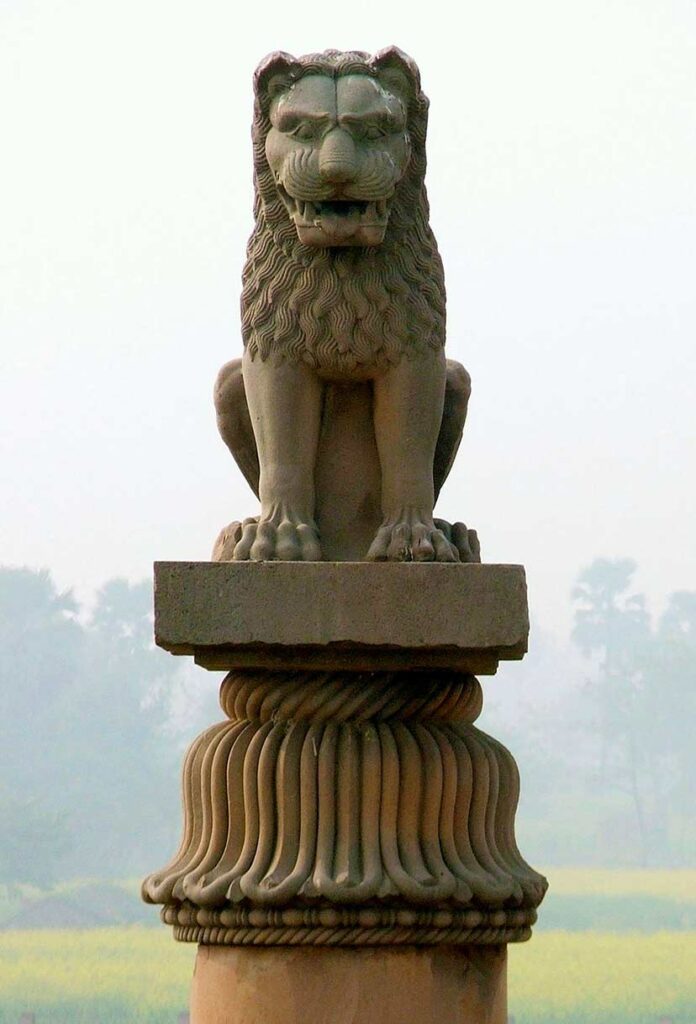
The pillar, about 20 m high, is of red sandstone surmounted by a lion facing north. It stands near a stupa, a pond and ruins of ancient monasteries. Excavations continue on the site of Kolkua and the archaeological vestiges discovered there are displayed in the Vaishali Museum (sculptures, coins, utensils, etc.).
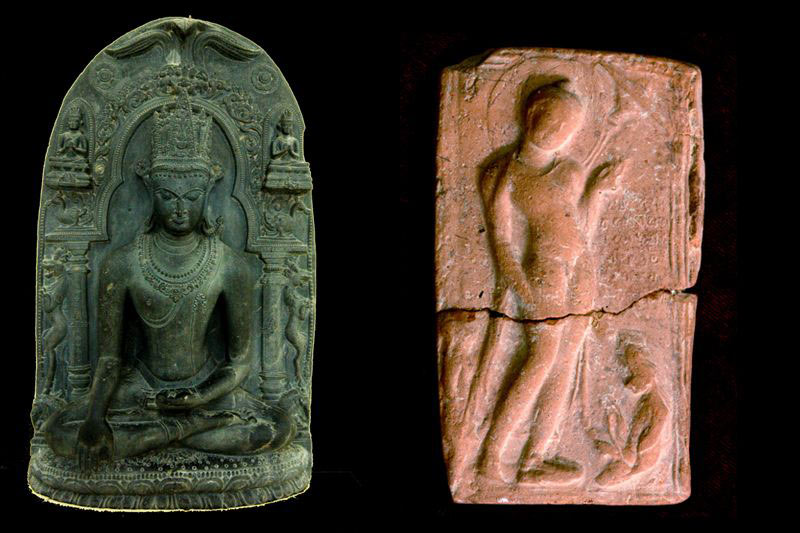
Near Vaishali Museum you can see the stupa of the relics of Buddha. It’s a very important place for Buddhists as a reliquary casket was discovered there, said to contain 1/8 of the relics of Buddha (now in the Patna Museum).
According to Buddhist tradition, after his Parinirvana, Buddha was cremated near Kushinagar (see below) and his ashes were distributed to 8 kings or dignitaries: to the Lichchhavis (a clan of Vaishali), to the King Ajhashatru of Magadha, to the Sakyas Kapilavastu (Buddha’s family), to the Bulis of Alakappa, to the Koliyas of Ramagram, to a brahmin of Vethweep and to the Mallas kings of Pavas and Kushinagar.

There are now only a few stones marking the sacred place but originally the stupa was 12 m in diameter, it was built of brick and covered with earth. Its first construction dates from the 5th century BC.
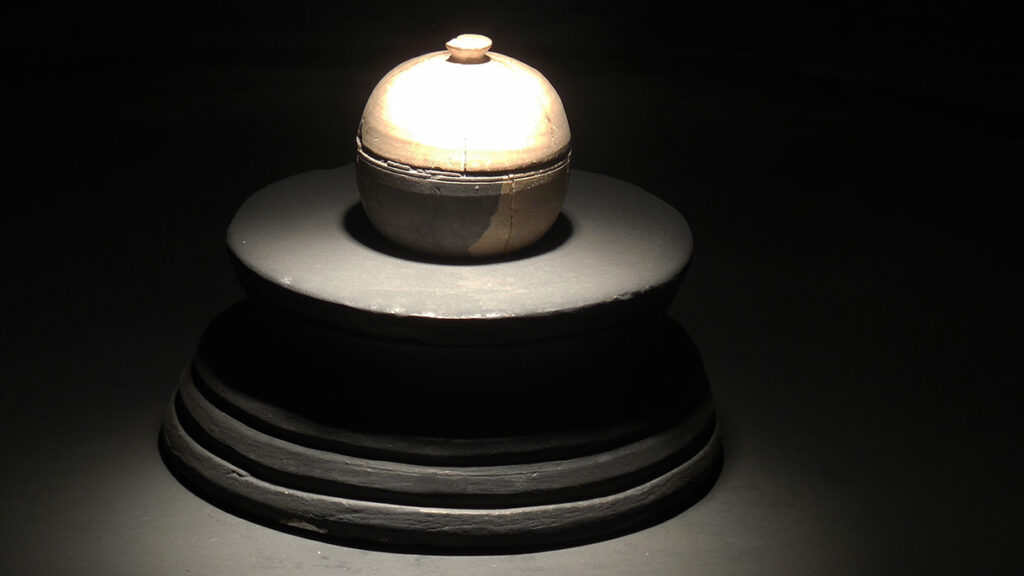
Close to the relics stupa is the ‘Abhishek Pushkarni’, or coronation tank, which served to anoint the newly elected representatives of Vaishali.
In the north of Vaishali, we can see the ruins of the ancient town of Vaishali known as ‘Raja Vishal ka Garh’. The archaeologists think it was the palace of King Vishal.
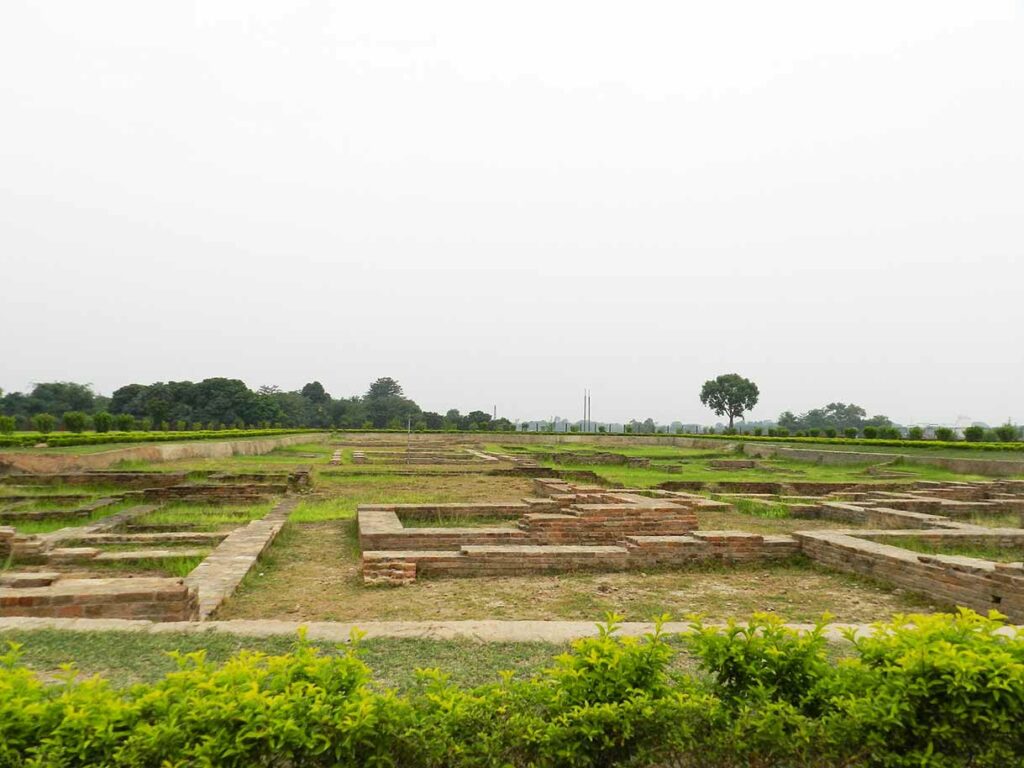
Vaishali is also a place highly revered by Jains; In the 6th century BC, Mahavira, the 1st Tirthankar (Jain saint) and founder of Jainism, was born in Basokund, 4 km from Vaishali and lived there until he was 22 years old.
Also to be seen in Vaishali: the Hindu temple Bawan Pokhar and the pagoda of peace built by the Japanese.
Kesariya, the last days of Buddha
100 km / 1-day visit
Located 100 km from Vaishali, Kesariya is a short but important stop of the Buddhist circuit.
Kesariya is said to be where the Buddha spent his last days before his Nirvana and where he handed his alms bowl to the Lichchhavis of Vaishali.
Buddha gave also there, one of his most important speeches: the ‘Kalama Sutta’, which advocates logical reasoning and questioning and not blind faith and dogmatism.
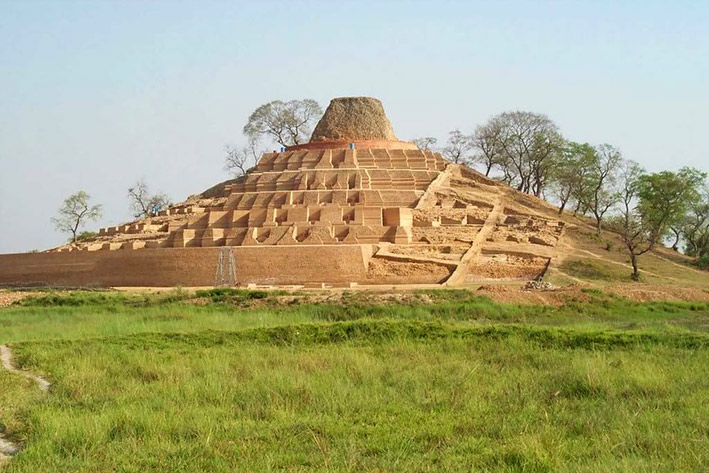
To commemorate this moment, the Lichchhavis built the Kesariya stupa. It is said to be the biggest stupa in the world: 42m in circumference and 3m high but it was previously bigger.
Originally, the stupa was just a mound made of earth; It got its current brick structure from the Maurya, Sunga and Kushana periods. Its unique architecture features several terraces with niches in which Buddha statues are laid, partly destroyed.

Long before his last visit, Buddha already had a link with Kesariya: the legends of Jataka (Buddha’s previous lives) tell that in a previous incarnation, Buddha was king of Vaishali.
Kushinagar, the Parinirvana of Buddha
120 km / 1-day visit
I leave Bihar to go to the neighboring state of Uttar Pradesh, in Kushinagar, 120 km from Kesariya and 50 km from the town of Gorakhpur.
Kushinagar is one of the four most important Buddhist pilgrimages along with Bodhgaya, Lumbini and Sarnath; It is said that it is the place where Buddha reached the Parinirvana after his death.
To mark the place of the Parinirvana, the Emperor Ashoka built a stupa (now on the ‘Buddha Marg Road’). The kings of the Gupta dynasty (4th-7th century AD) then enlarged the building by adding the 6m long monolithic of the reclining Buddha that can still be seen today.
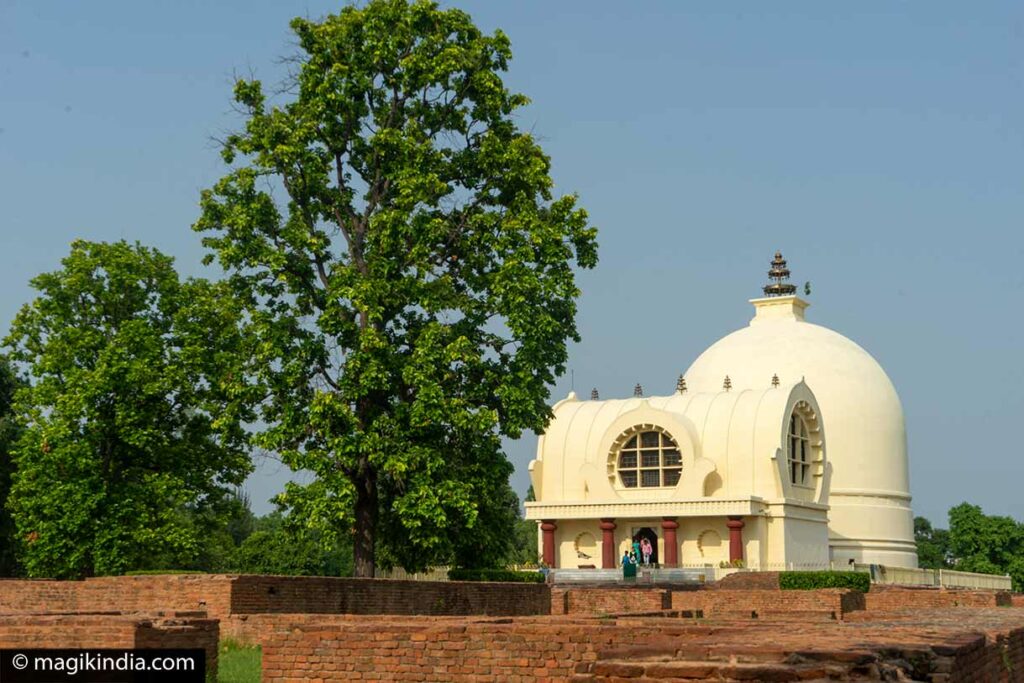
The reclining Buddha is an important statuary motif of Buddhism. It represents Buddha about to enter the Parinirvana. Lying on the right flank, he has his head resting on a cushion or leaning on his right elbow, supporting his head with his hand.
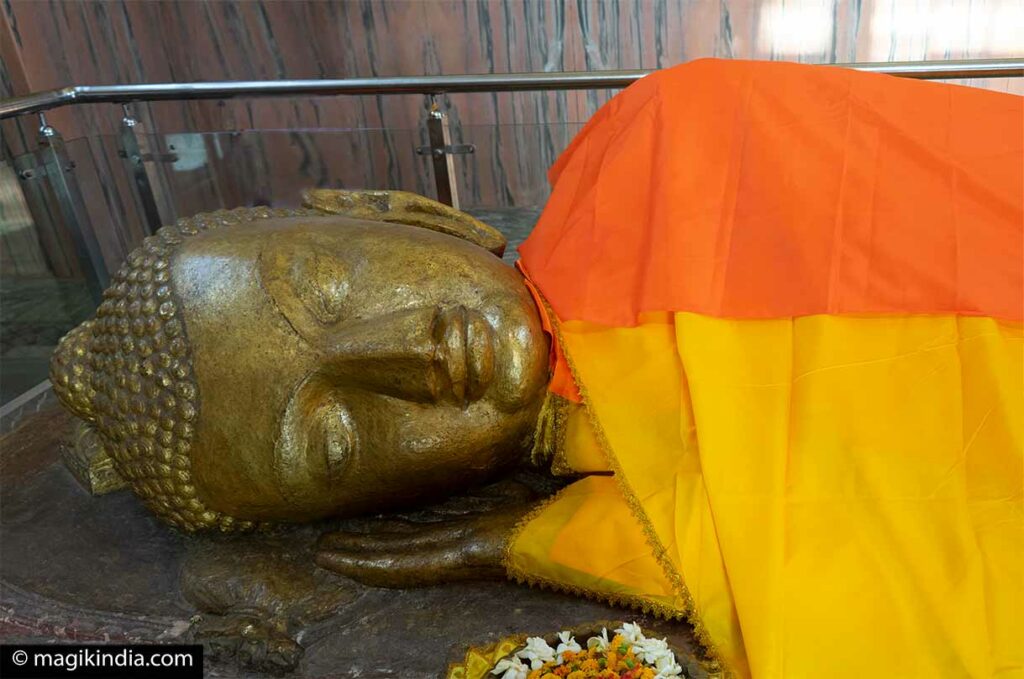
The site of Kushinagar was abandoned following the decline of Buddhism in India (from the 12th century AD) and was rediscovered by the archaeologist Alexander Cunningham at the end of the 19th century.
Just to the left of the site, a large golden stupa attracts our attention: it is the Matha Kuar sanctuary, which houses a 3 meters high Buddha statue carved in a single block and dating from the 10th or 11th century of our era.

Continuing on the ‘Buddha Marg Road’, we find the Kushinagar Museum, which displays beautiful Buddhist icons, bronzes and thangkas (Buddhist paintings).
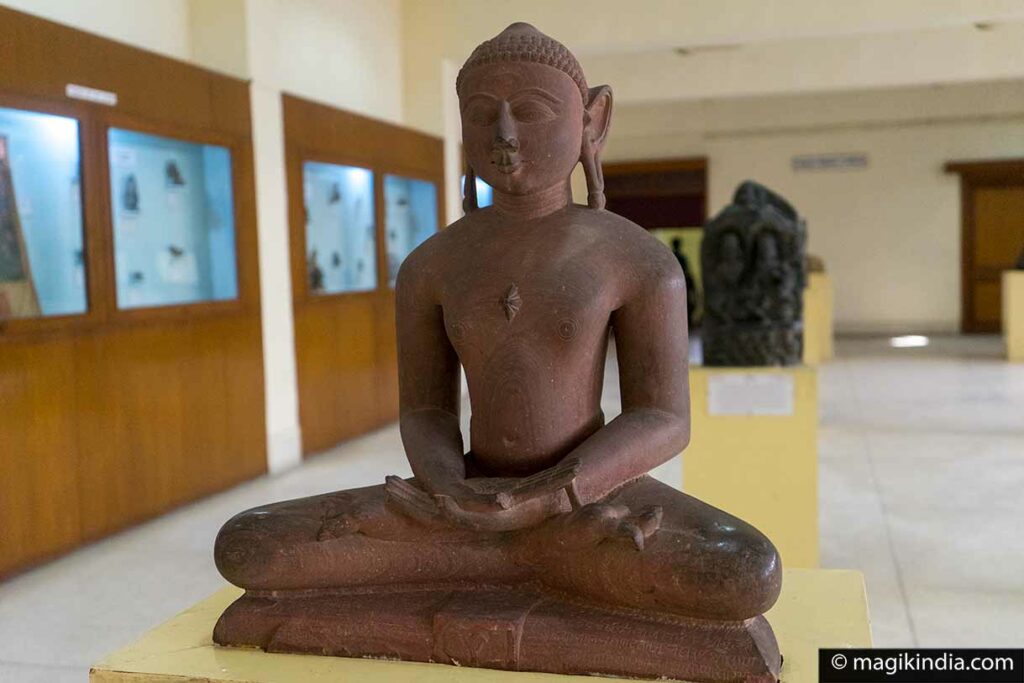
A little further on, still on the ‘Buddha Marg Road’ stands the 15 m high Ramabhar stupa (or Mukut-Bandhan Vihar), which was built to mark Buddha’s cremation site after his Nirvana.
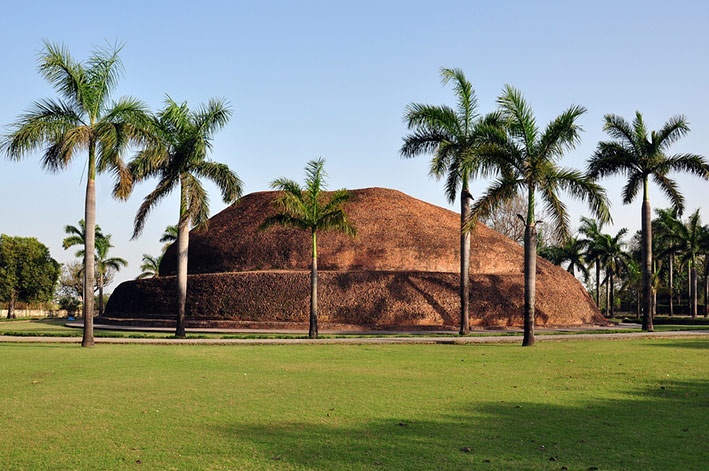
I set off to Lumbini, Nepal. On the way, I stop at Gorakpur, just to visit the Gorakhnath temple, an important spiritual center in Uttar Pradesh. The Gorakhnath Math is a religious complex belonging to the ‘Nath’, a Shivaite monastic group. Gorakhnath was a famous yogi in the 11th century (considered as a saint by his followers) who drafted a number of canonical texts. The temple of Gorakhpur is supposed to contain the samadhi (tomb) and the gaddi (seat of prayer) of the Yogi.
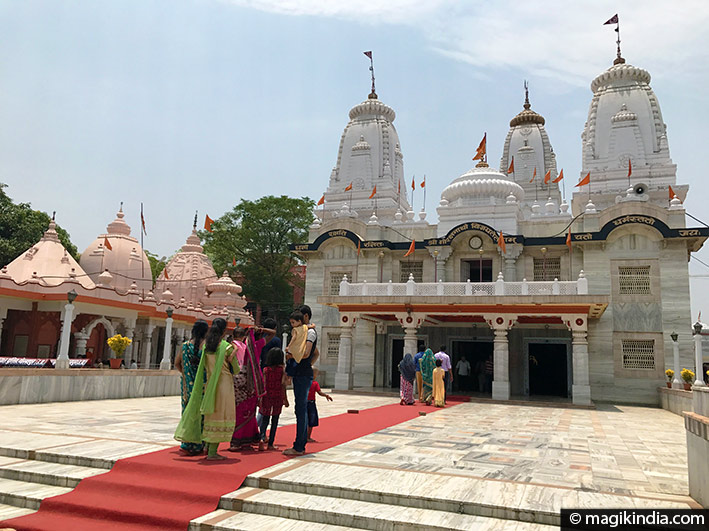
Lumbini, the birth of Buddha
130 km / 2-day visit
From Gorakpur, there are about 4 hours drive (130 km) to Lumbini (Nepal). First, you have to cross the Indo-Nepal border at Sunauli and complete the formalities at the Indian and Nepalese immigration offices. On the Indian side, you just have to show your passport; On the Nepal side (about 200 m from the Indian office), you need a visa easily obtained on site. The visa lasts 15, 30 or 90 days and costs 25, 40 or 100 dollars, respectively. To shorten the formalities, you can register online : www.online.nepalimmigration.gov.np
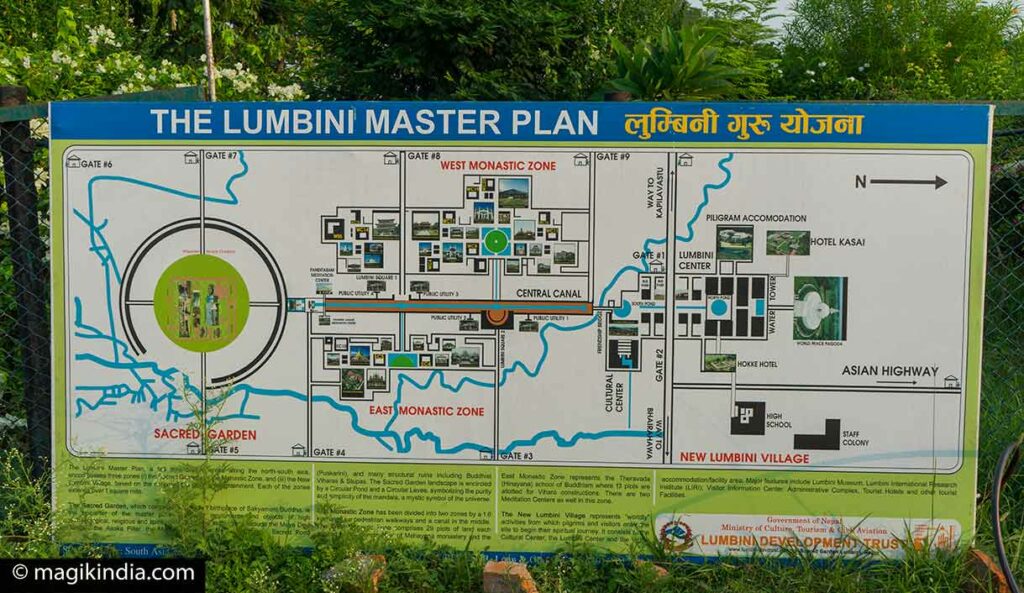
The archaeological site of Lumbini, a UNESCO World Heritage Site, is 30 km from the border.
Lumbini is one of the most sacred places of Buddhism for it is where Queen Mayadevi is said to have given birth to Siddhartha Gautama (the Buddha to be) in 623 BC, at Vaisakha Poornima, the full moon of the first month of the Nepalese calendar.
Mayadevi, the queen of Kapilavastu, was on her way to her native hometown of Devadaha. As she was crossing the gardens of Lumbini, she felt the first signs of labor, she stopped and gave birth to the divine prince standing under a tree and holding on to a branch for support.

The site of Lumbini is composed of a pond (Shakya Kund) where it is said that the queen bathed before the birth of Siddhartha, a pipal tree, ruins of ancient monasteries, a pillar erected by the emperor Ashoka in 249 av. BC and the remains of the Mayadevi temple protected under a building.
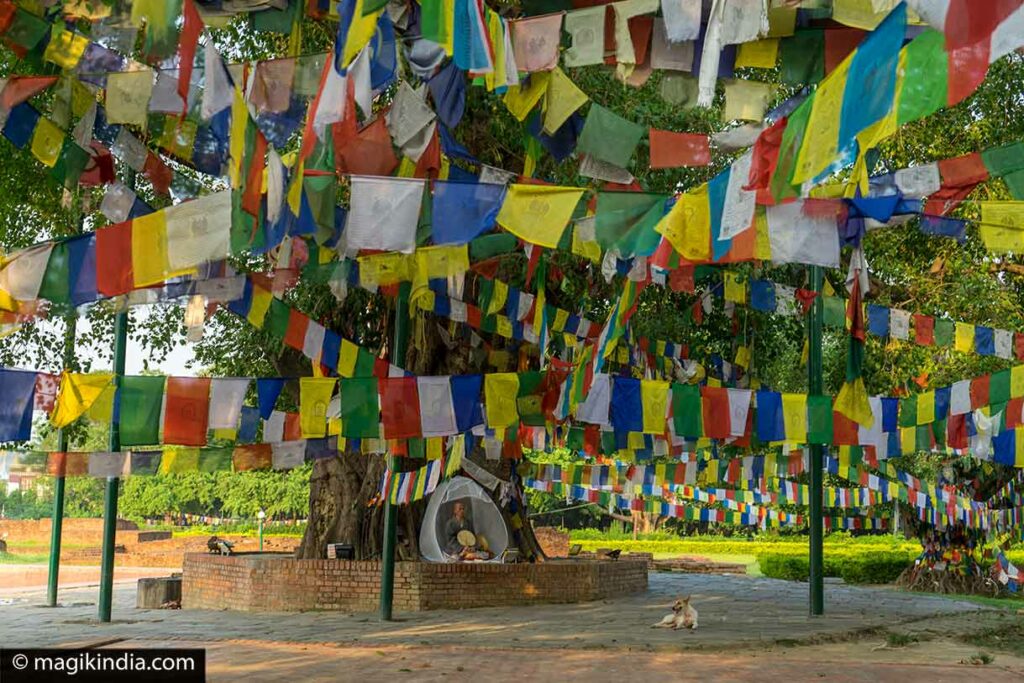
Inside the Mayadevi temple, a stone marks the exact location of the birth of Buddha overhung by a stone sculpture depicting the birth of Siddhartha.
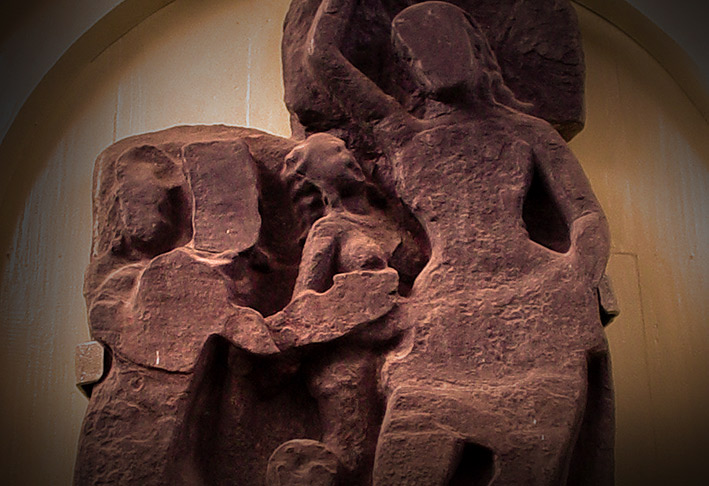
In the North of Mayadevi temple, there are about thirty monasteries built by several countries and showing different buddhist architectures. It really worth visiting them (those open to the public), for that you can hire a rickshaw or do it by walk, for the bravest. 😉
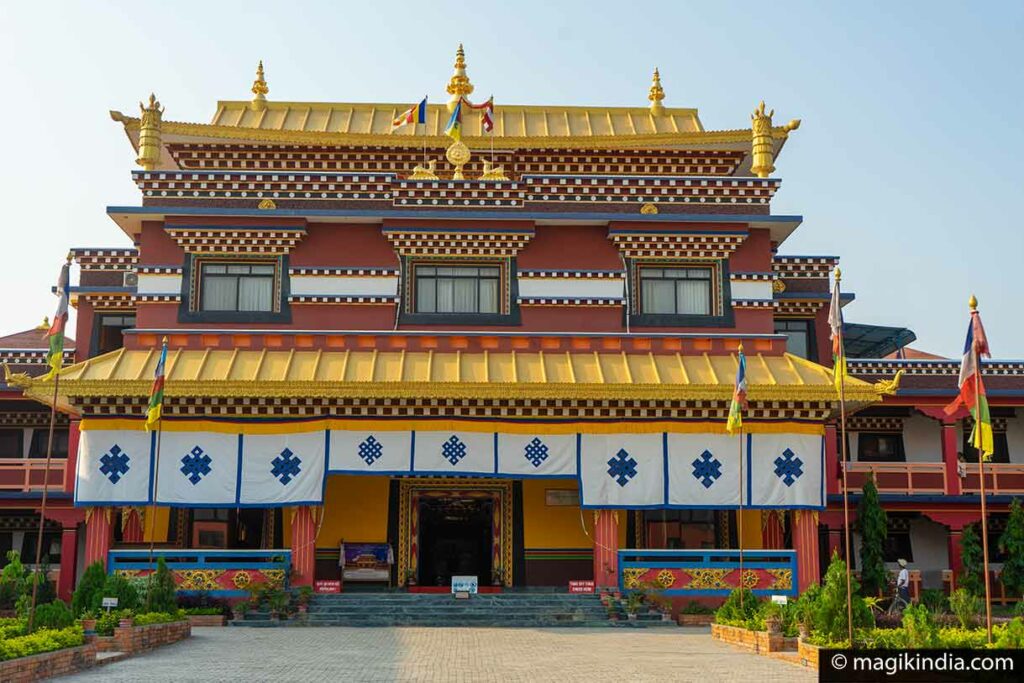
At the very north end of the monastery zone stands the white pagoda of peace built by the Japanese Buddhist order ‘Nipponzan Myohoji’ founded by the master Nichidatsu Fujii. Relics of the Buddha have been inserted in the foundation stone and at the top of the pagoda.
Pagodas of peace have been erected all around the world by this Buddhist order following the tragedies of Hiroshima and Nagasaki. They are built according to the ‘lotus sutra’ to disseminate peace and love in the world.
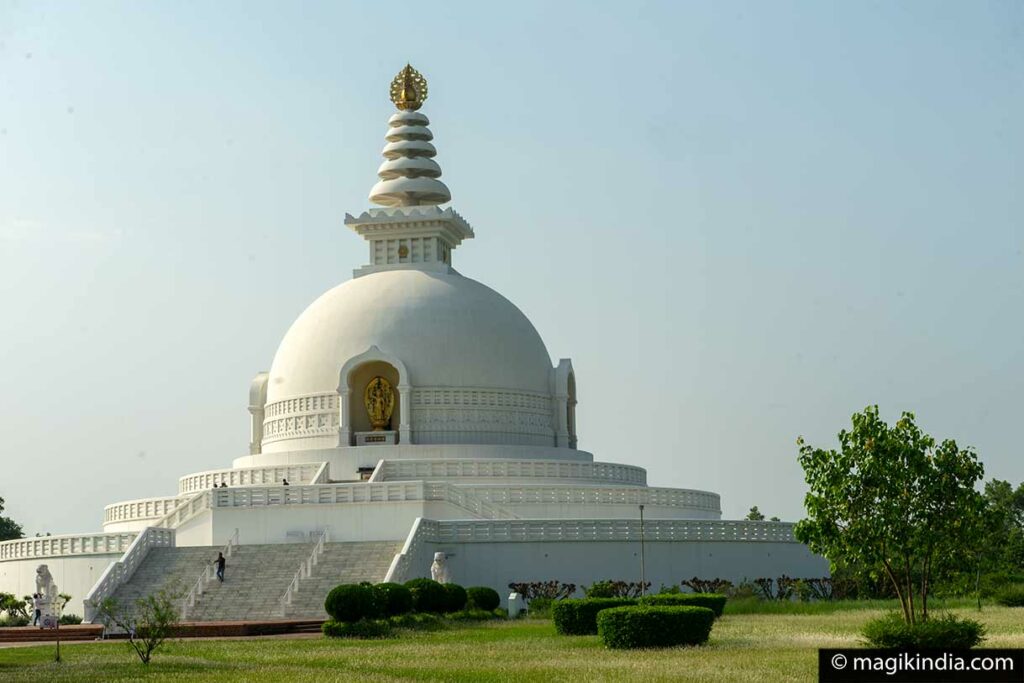
After this peaceful stop, I hit the road again to the Sunauli border. There are many other beautiful sites in Nepal linked to Buddha like Kapilavastu (the capital of the Shakyas kingdom, the Buddha’s family dynasty) but I leave that for another trip.
Shravasti, the 24 rainy seasons
220 km / 1/2-day visit
I cross the Indo-Nepal border again at Sunauli, heading to Shravasti in Uttar Pradesh; 6 hours drive are needed.
Shravasti was the capital of the Kosala kingdom in the 6th century BC and it is believed that Buddha spent 24 rainy seasons there.
Buddha settled down in Shravasti and gave a great number of speeches there; the legend has to that he performs the miracle of multiplying himself a million times while sitting on a lotus, the fire and water emanating from his body.
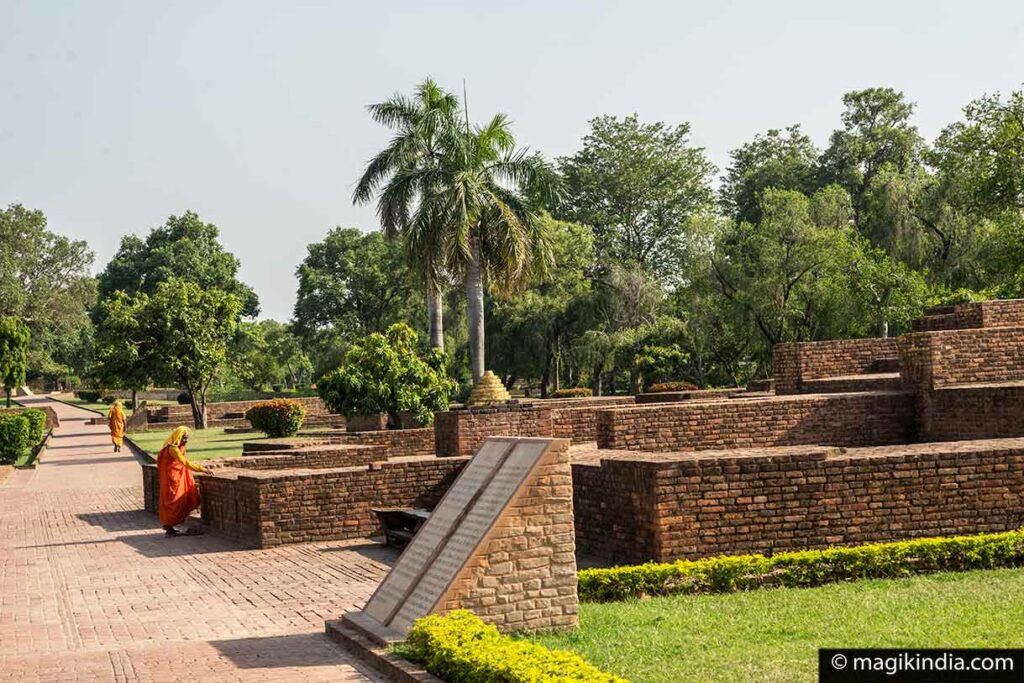
The main attraction of Shravasti is the site of Jetavana where Buddha stayed. The place includes the ruins of many sanctuaries, stupas and monasteries.
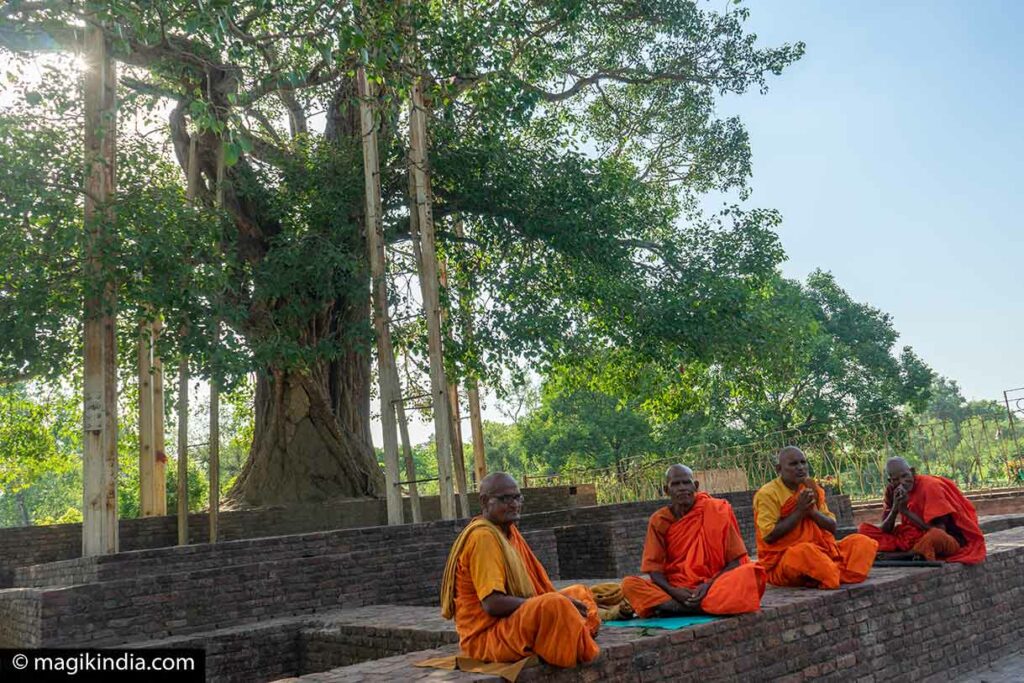
Inside the Jetavana complex, we find also a ficus tree, which is said to be a cut from the original Bodhi tree where Buddha got enlightened; Anathapindika, a devotee of Buddha brought it back from Sri Lanka.
All around Jetavana, monasteries have been built by several Asian countries (Sri Lankan, Chinese, Burmese and Thai). The most impressive is the one of Thailand with its huge golden Buddha statue and stupa nestled in a beautiful park.
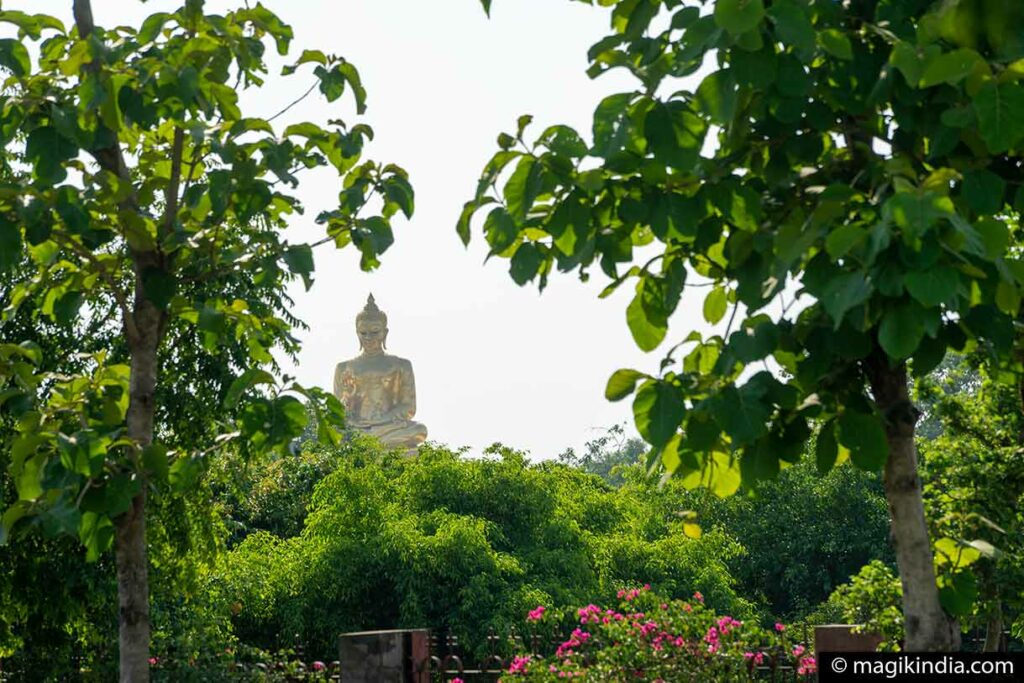
Continuing on the same route towards the North, we come across the ancient Shobhnath temple (dating from medieval times); It is a sacred place for Jains as it is said that Swayambunatha, the 3rd Tirthankara (Jain saint), was born there.
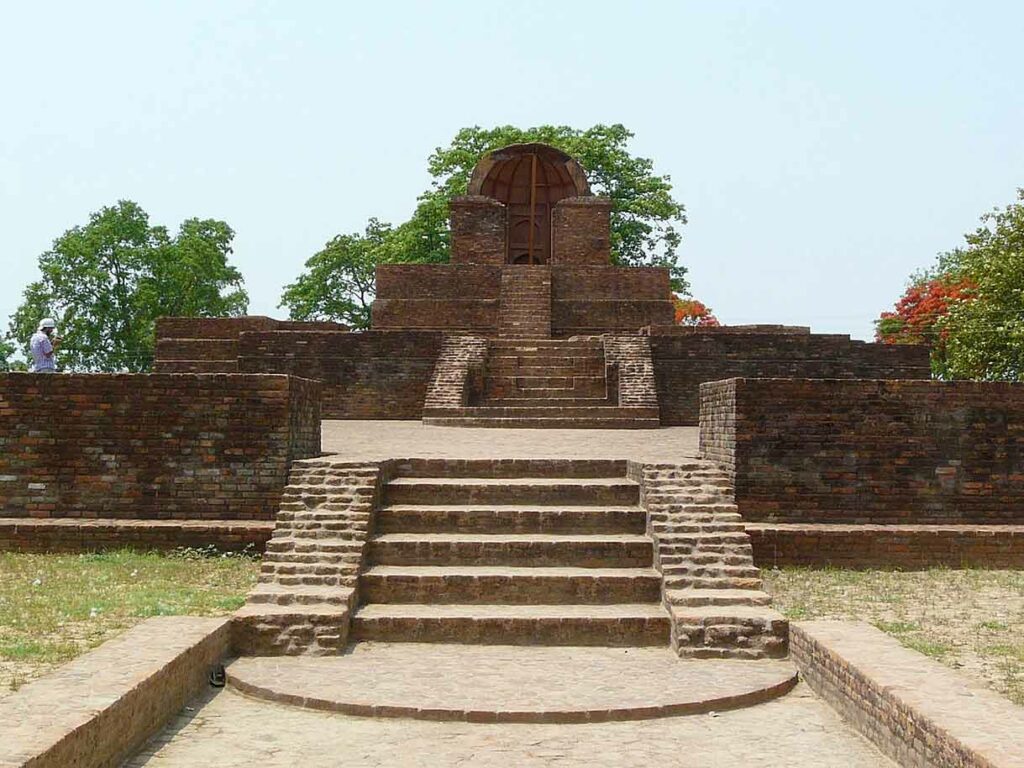
Farther north on the same road are two old stupas: ‘Pakki Kuti stupa’ or ‘Angulimala stupa’, named after a cruel man who used to wear a necklace of fingers cut off from his victims. Influenced by the teachings of Buddha, he converted to Buddhism. The second stupa, Kachchi Kuti, is that of Sudatta, also known as Anathapindika, a disciple of Buddha.
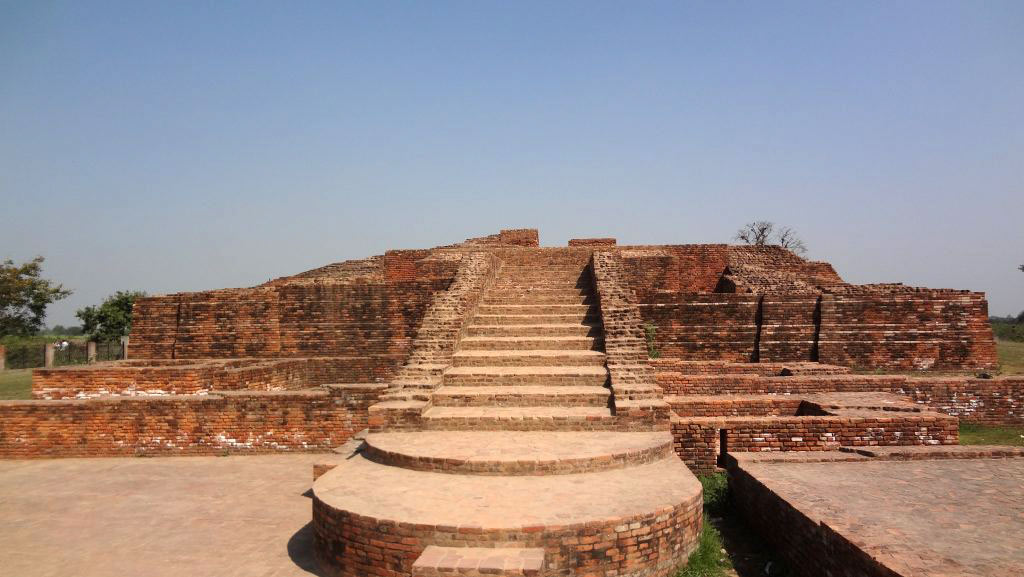
Sarnath, the first sermon of Buddha
300km / 1-day visit
I end my trip at Sarnath, located 300 km from Shravasti and 13 km from Varanasi, the spiritual capital of India which, by the way, is my favorite Indian city.
Sarnath is one of the four holiest Buddhist pilgrimages; It is said that five weeks after his enlightenment in Bodhgaya, Buddha gave his first sermon, the Dhammacakkappavattana Sutta or the four noble truths, in order to put the wheel of dhamma (the universal law) in motion.
The stupa Dhamekh (or Dharma Chakra Stupa) marks the place of the first sermon. It is a cylindrical brick building 40 m high and 30 m in diameter containing 8 niches adorned with Buddha statues. It was first erected by the Ashoka Buddhist king in 249 BCE and rebuilt during the 5th century AD.

The remains of Buddhist monasteries are all around the stupa as well as the ruins of the famous Ashoka pillar, which was surmounted by four back-to-back lions (now in the Sarnath Museum). These lions together with the ‘dharmachakra’ (dharma wheel) engraved on the base below the lions have become the official emblems of India.
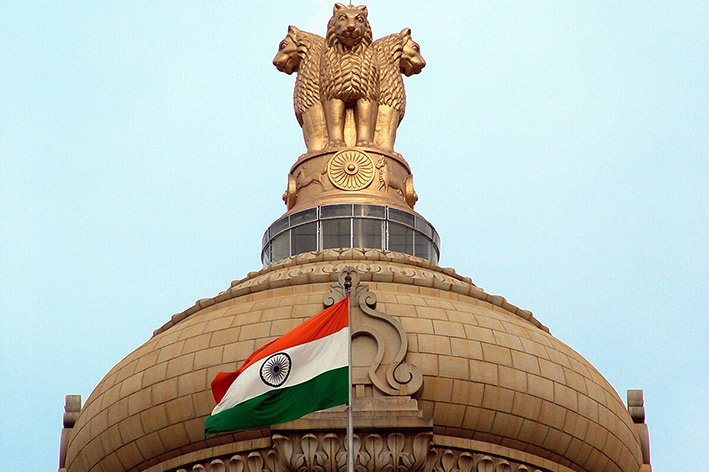
Sarnath is a sacred place for Jains too. It is said that the eleventh Tirthankar (jain saint), Shri Shreyansanatha, a descendant of the Ikshvaku dynasty, was born there. A temple was built in the 19th century near the Dhamekh stupa to commemorate this event.
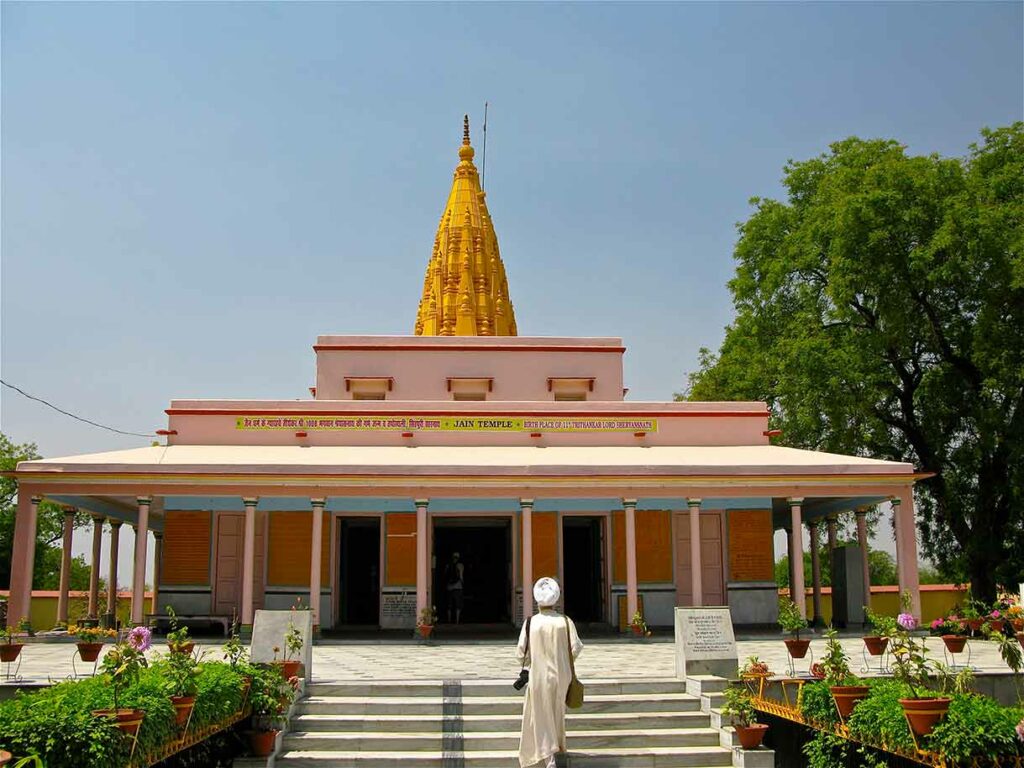
The Sangha (Buddhist community) also took shape in Sarnath when the five companions of the six years penance of Buddha joined him, after they also got enlightened. When the number of ‘enlightened’ monks in the Sangha rose up to 60, Buddha sent them to the four cardinal points to spread and teach the Dhamma or Dharma (Universal Law).
The Stupa Chaukhandi, 10km from Varanasi (just a few kilometers before the site of Sarnath) marks the place where Buddha met his 5 former disciples. It was built in the 4th-6th century AD during the Gupta period.
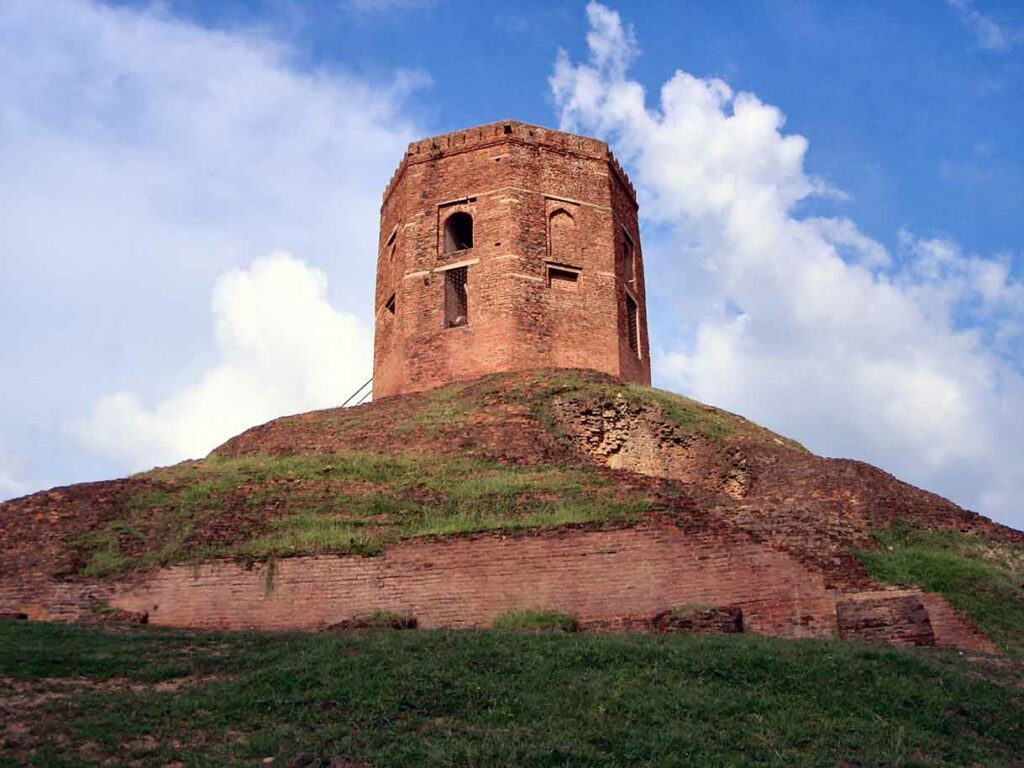
On the site of Sarnath there are also many recent monasteries from different Asian countries. The Thai monastery is famous as well as the Mulagandha Kuti Vihar built by the Mahabodhi Society.
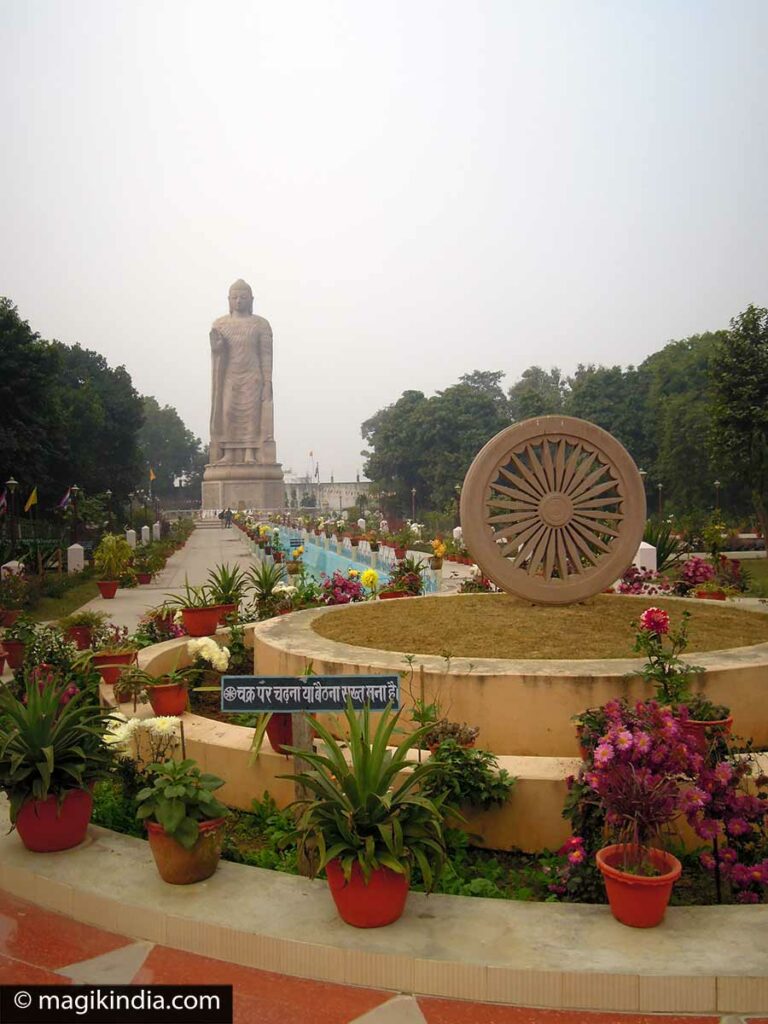

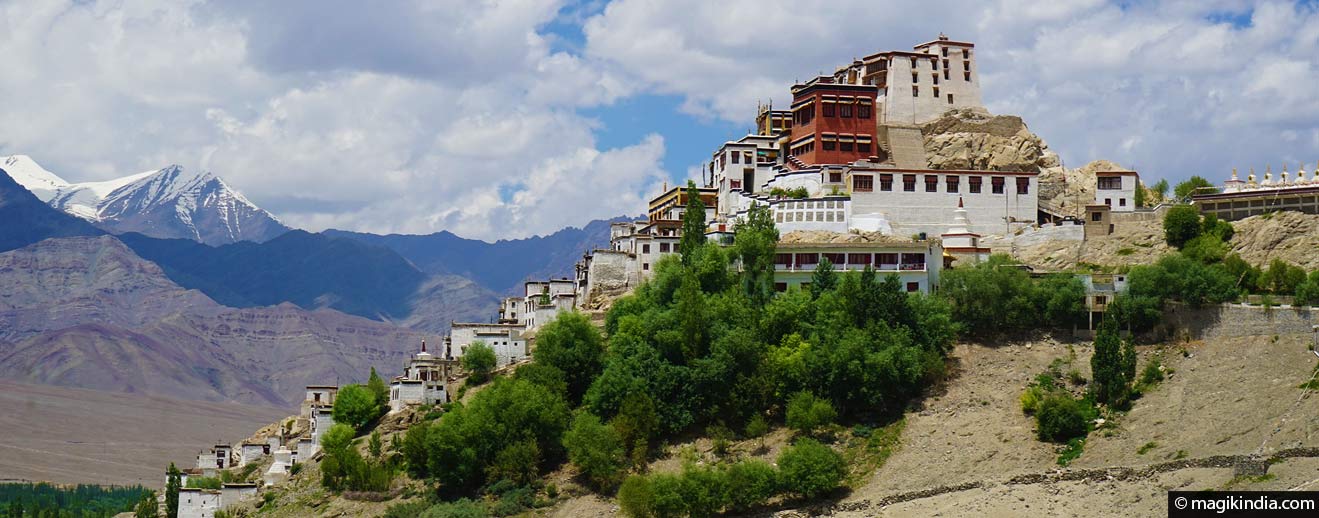
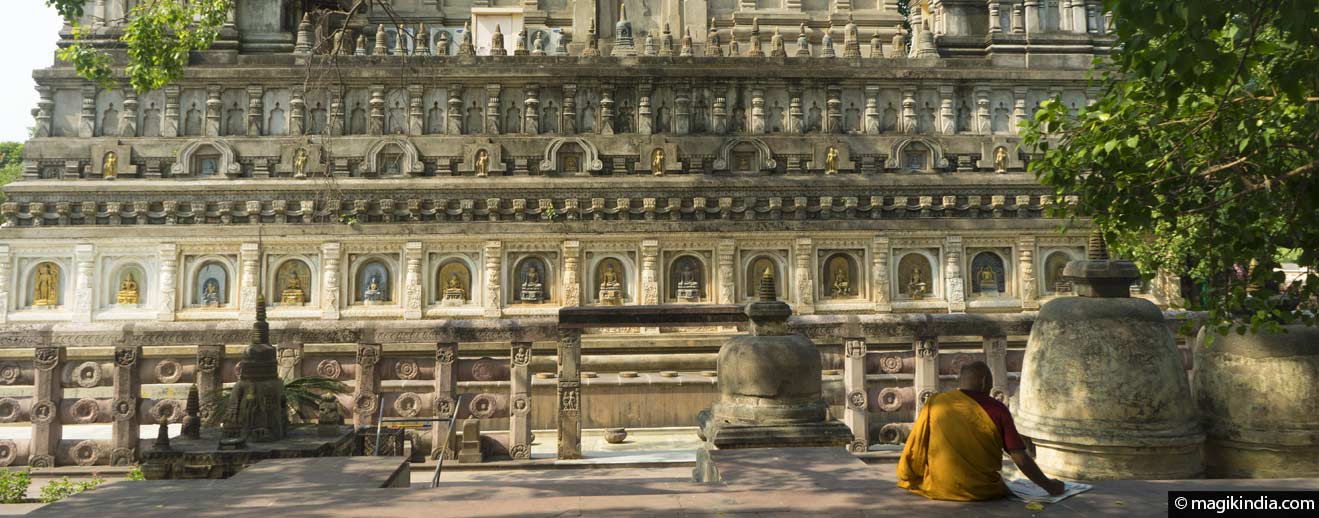

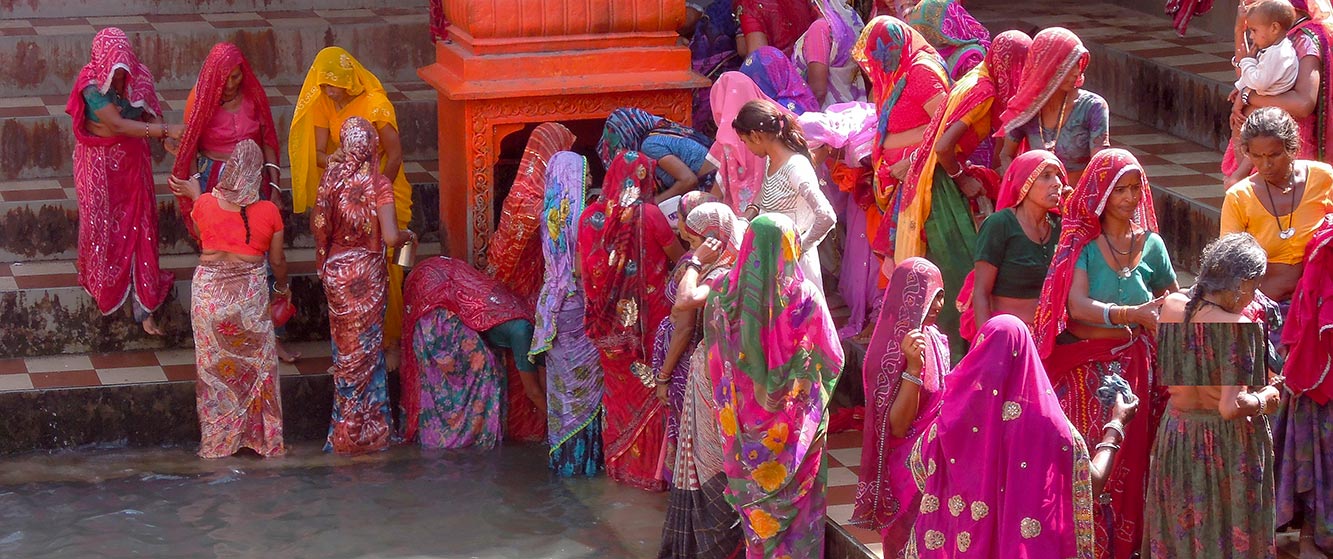
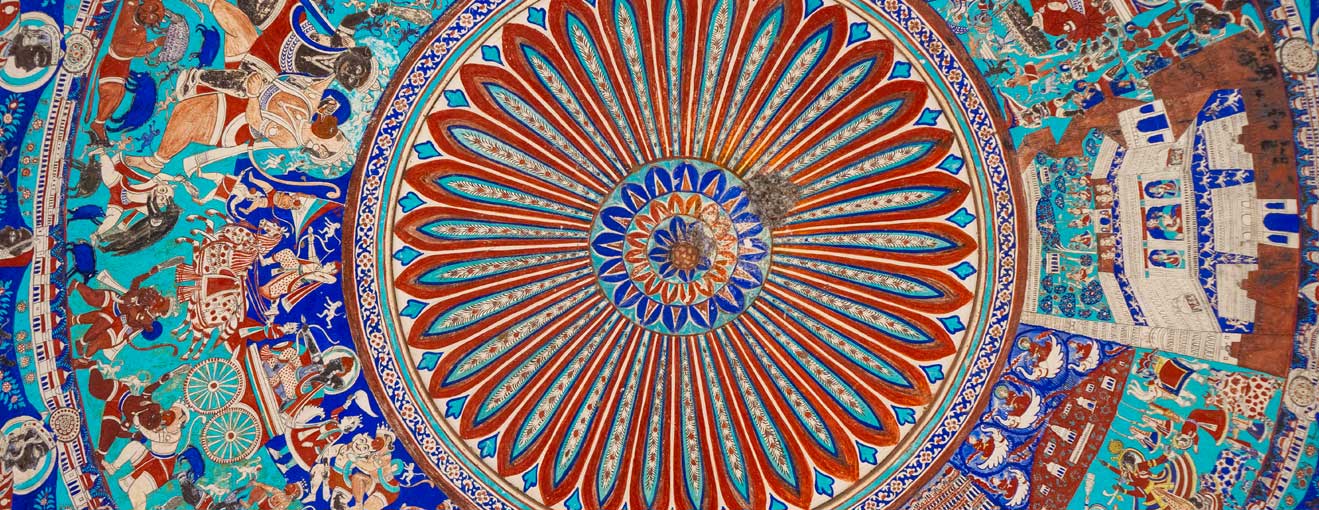

I want to take the exact road route that Buddha took from his home to the place of his enlightenment. Can you please give me that route?
Dear Finn, I’m not sure of the exact route but you see in my article the different places Buddha went when in India. From Lumbini, the place of his birth to Kushinagar the place of his Nirvana. Hope this helps. 🙂
Read the Book, “Rude Awakening” by Ajahn Sucitto and Nick Scott.
Google, Rude Awakening- Footsteps of the Buddha.
It should be available for free at a local Monastery.
Gary
Thanks Gary for the tip ! 🙂